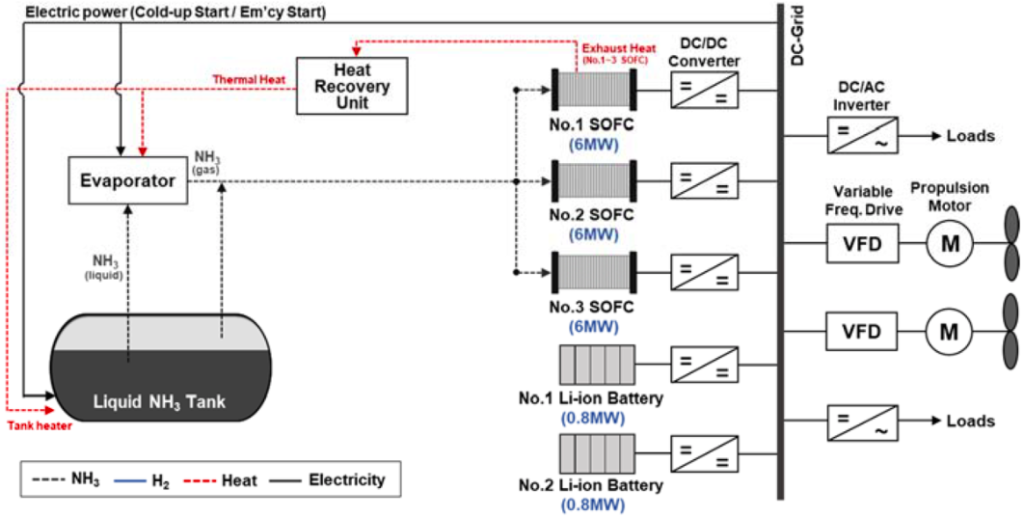Environmental and Economic Assessment of Ammonia as a Fuel for Ships
By Trevor Brown on March 17, 2020
This month, the Korean Register published a comparative assessment of the environmental and economic merits of using ammonia as a maritime fuel. The work, written in collaboration with researchers at Pusan National University, is published in the open-access Journal of Marine Science and Engineering. It concludes that “ammonia can be a carbon-free fuel for ships,” and presents “a meaningful approach toward solving GHG problems in the maritime industry.”
In this paper, we propose four propulsion systems for a 2500 Twenty-foot Equivalent Unit (TEU) container feeder ship. All of the proposed systems are fueled by ammonia; however, different power systems are used: main engine, generators, polymer electrolyte membrane fuel cell (PEMFC), and solid oxide fuel cell (SOFC). Further, these systems are compared to the conventional main engine propulsion system that is fueled by heavy fuel oil, with a focus on the economic and environmental perspectives. By comparing the conventional and proposed systems, it is shown that ammonia can be a carbon-free fuel for ships. Moreover, among the proposed systems, the SOFC power system is the most eco-friendly alternative (up to 92.1%), even though it requires a high lifecycle cost than the others.
Kim, Roh, et al, A Preliminary Study on an Alternative Ship Propulsion System Fueled by Ammonia: Environmental and Economic Assessments, Journal of Marine Science and Engineering, March 2020.

As we reported in detail last month, the Korean Register recently published a technical assessment of ammonia’s potential as a zero-emission maritime fuel, in which it makes an “explicit and complete case in ammonia’s favor.”